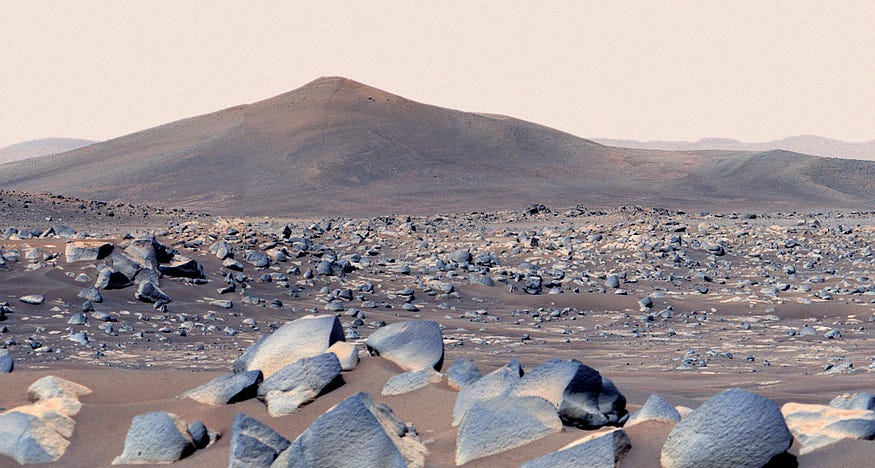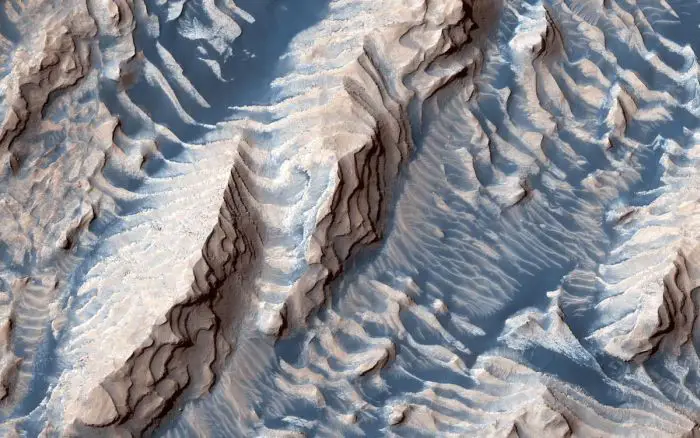 ars may seem like a very simple planet that does not have much similarity to our planet or the rest of the planets present in our solar system. However, based on high-resolution photos taken in the recent past of the surface of Mars, geologists presented a case of what Mars looked like a few billion years ago and some similarities to Earth.
ars may seem like a very simple planet that does not have much similarity to our planet or the rest of the planets present in our solar system. However, based on high-resolution photos taken in the recent past of the surface of Mars, geologists presented a case of what Mars looked like a few billion years ago and some similarities to Earth.
A picture can be worth a thousand words, but for scientists, it can be worth over a million. The crater that is represented within the photo is of Danielson Crate about 42 miles in diameter, located in the southwest Arabia Terra region of Mars. The sedimentary rock that can be observed formed billions of years ago, layer by layer, and each layer represents a change within the ancient climate that has affected the ecosystem of Mars.

The same applies to what the climate has done to deteriorate these sedimentary rocks. Erosion had eaten the sediments and those that presented variation in the resources that they were formed from, had better resistance to the erosion, which is why we are now seeing stairs-like effects. The sediments that are still standing strong must be rich in resources or metal which reinforced their resistance to erosion.
NASA gave a better description of this phenomenon:
Cyclical variations in the sediment properties made some layers more resistant to erosion than others. After eons, these tougher layers protrude outward like stair steps. Across these steps, the winds have scattered sand (typically appearing darker and less red, i.e. ‘bluer’ in contrast-enhanced color), giving rise to the zebra stripe-like patterns.” (Source: NASA)
This theory presented by geologists from the University of Arizona working in coordination with NASA specialists gives a more plausible scenario for Mars once containing water. Based on a similar photographic study (study based on photos as evidence), NASA speculated that a good part of Mars was filled with water, but about 3 billion years ago Mars’ crust had soaked up all the water, once again due to changes in the climate.

Scientists are not very clear as to how all of those deposits presented in the photo were formed, but they are sure it must have been a process that lasted at least millions of years. Some suggest that it was a combination of the effects of climate change associated with Mars’ orbital variations. Geologist Alessio Murana suggested in a study that groundwater upwelling might have been responsible for this change.
Mars should be a good example for us as Earthlinks to what climate change can do to a planet, despite the radical changes occurring in a large time frame of millions of years, maybe even billions. As technology is becoming progressively more advanced, astronomers are able to take more defined photos of Mars, which helps specialists unfold the fascinating history of this planet.
Once we start understanding the basics, we can apply it to all the planets to understand how they formed and how these have changed in time. Although the impact is harder to define, it seems that it all may come down to climate change, which even in Earth’s ancient history has presented abnormal patterns. All history has to offer is lessons for the future. It is up to us if we want to acknowledge these lessons.
Avid Writer with invaluable knowledge of Humanity!
Upcoming historian with over 30 million views online.
“You make your own life.”





